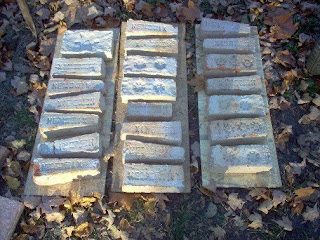My first project for the bricks I am making is a furnace to melt and cast aluminum.

I was able to lay a few courses of brick this morning. This part is for the chimney.
Follow me on my journey as I perfect the old art of making bricks. I will be making fired natural clay bricks, tiles, and even compressed earth bricks or "CEB"s. Much of what I make will be for projects around home that I have dreamt up over time. I offer to make for you bricks with your name on them for a small cost as well. I may from time to time stray to some of my other creations that I think you may find of interest also. Please leave a comment for me about what you find here.















